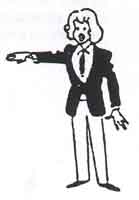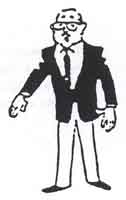 |
 |
JUDO |  |
| Home | History | Technics | Arbitration | Links | Contact us |
As writes in the part ″Technics″, in judo, the goal is to bring down or to immobilize his opponent and to mark ippon. The fight of judo is given rhythm by a lot of terms of Japanese arbitration having all their meanings. So we shall see the advantages, the penalties and some particular terms... |
| ADVANTAGES | PENALTIES | PARTICULAR TERMS |
|
ADVANTAGES |
| Ippon |
 |
Direct ippon:
Indirect
ippon(particular cases): |
| Waza ari |
| Waza ari: • A criterion is missing to obtain ippon up • 20 to 24 seconds of immobilization • If the opponent is punished by 3 shidos |
 |
| Waza ari awazate Ippon |
 |
Waza ari
awazate Ippon: • 2 Waza ari adds up and give Ippon It's the only scenario where points add up in judo! |
| Yuko |
|
Yuko:
|
 |
| Koka |
|
|
Koka: • Projection on with control over the shoulder, the thigh or the buttock, with little force and speed • If the opponent is punished by a shido • 10 to 14 seconds of immobilization |
| Hiki wake |
|
Hiki wake: Announce the draw if,
at the end the fight, both judokas are equally. There is then decision
(Hantei). |
 |
| Height of page |  |
